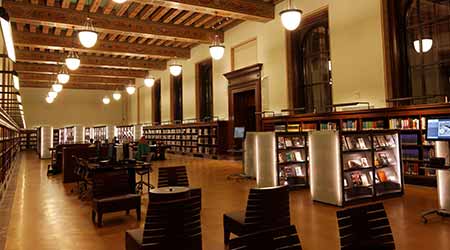 By understanding lighting product options and carefully considering installation strategies, managers will be better able to quantify upgrade results meet organizational goals.
By understanding lighting product options and carefully considering installation strategies, managers will be better able to quantify upgrade results meet organizational goals.Benefits of Upgrading Emergency Lighting
Strategies to ensure lighting system upgrades help managers meet demands for aesthetics and energy efficiency
One aspect of lighting often overlooked during renovations is emergency lighting. Typically, existing emergency lights are in poor condition or were never designed to meet current life safety codes. When upgrading lighting in a space, managers should include emergency lighting in the review so it is part of the renovation not just a costly change order later.
Installing a small emergency lighting inverter rather than separate standalone batteries or emergency lighting units offers additional cost savings and aesthetic benefit. Not only is one inverter easier to maintain compared with many scattered batteries, but with added functionality, these inverters can tie into the building automation system (BAS) to communicate alarm conditions.
Lighting plays a crucial role in the way building occupants and visitors perceive a space, but it is impossible to quantify soft costs associated with one product or lighting system over another in any life-cycle-cost analysis. The clear winner on paper might leave occupants unhappy for a reason that managers cannot quantify on paper. Light fixtures often look different after installation than in the marketing brochure or on the website.
Once managers have narrowed the options, they should put aside the numbers and construct mockups to make side-by-side comparisons of products. Typically, lighting representatives are willing to provide samples of light fixtures so a manager can mock them up to help make the final purchase determination.
After this comparison review, fixture costs often become much less important. This issue is especially true when the ultimate goal is user satisfaction with the installation and avoiding subsequent complaints. A mock-up is a proven strategy for getting decision makers into the process who otherwise might not be fully engaged. This facilitates evaluation based on appearance is a critical metric for a successful lighting upgrade.
Installation insights
Once a lighting upgrade project is bid and the contract is awarded, the challenging task of making it a reality begins. Often, with lighting upgrades, these projects must proceed while the facility remains in operation. Depending on the facility, this makes phasing and planning more difficult than with wholesale renovations.
Managers need to set project schedules realistically. Careful consideration of space availability, project magnitude, and product lead times must be part of this process. Keep in mind that some lighting products can have lead times as long as 12 weeks. And since lead times do not start until the manufacturer has approved shop drawings, obtaining lighting products might require elongated timelines, especially when the initial shop drawings are rejected and resubmitted for review.
For projects that need to be completed quickly, managers should consider using only products on manufacturers’ quick-ship programs. These products often have limited options but can arrive in less than two weeks after approved submittals.
Related Topics:














